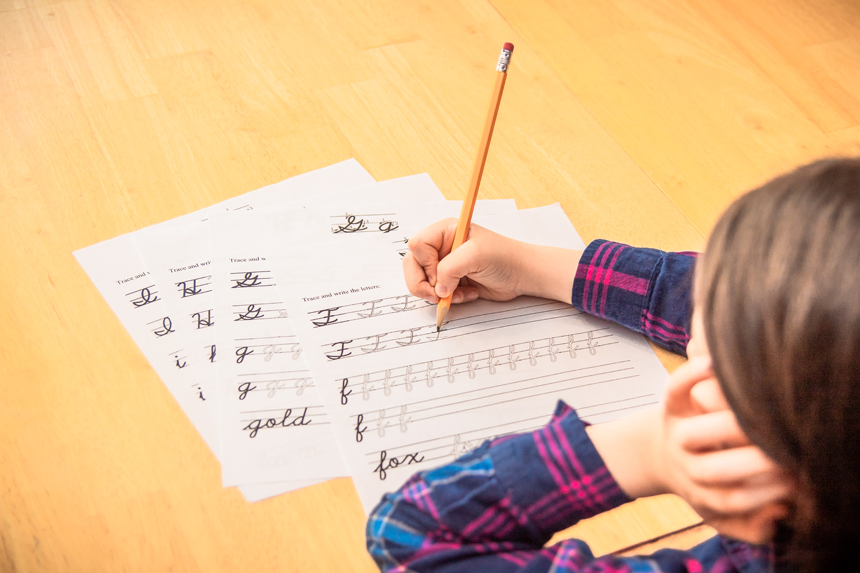People of a certain age love to comment on how younger generations lack certain skills. While it’s true that very few people have needed to drag blocks of ice in from the ice house in the roughly 105 years that we’ve had refrigerators for the home, there are other, more common things that “ the kids” don’t know (mainly because there’s not a reason to any more). With that in mind, here are ten things that most of today’s kids don’t know how to do, and five that they probably know better than you.
1. Use a Card Catalog

To be clear, the Dewey Decimal System remains the cornerstone of library organization. But the massive card catalog was replaced by computer search systems long ago. Sure, kids could probably intuit how it works, once they realize that fiction is alphabetical and non-fiction is by Dewey section, but they’d probably be mystified as why it was so cumbersome.
2. Wind a Watch
Most of the people who still wear traditional wristwatches do it as a fashion statement. The basic gadget of timekeeping for most of us has been replaced by a phone with a clock on it. And fitness trackers like FitBit (which sold over 10 million units in 2021) have you covered on time as well as many other functions. But if a young person decides that they do indeed want to wear a grandpa’s wristwatch, chances are someone is going to have to teach them about winding it (unless it’s one of those, at one time, new-fangled self-winders).
3. Write in Cursive

The shedding of cursive writing from most school curricula has unexpectedly become a hot button topic. Yes, kids are generally still taught enough to sign their names (although some school systems don’t teach it at all), but focusing on fancy writing in a day and age when said writing has almost zero impact on the world that they experience after school is, honestly, not time well spent. So while most kids can deliver an appropriate signature, don’t expect them to duplicate the penmanship style of the Declaration of Independence.
4. Tie a Tie
While some writers (like me) think that it’s time that society moved past the tie, there are still a few events for kids (speech and debate competitions, graduation, etc.) that demand it. But with young men being made to don ties on only rare occasions, tying one is not a commonly learned skill. Then again, no one really complains that they don’t know how to go to the well for water, either.
5. Do Long Division
Yes, they still teach division in schools. However, most math classes approach arithmetic from the common-sense notion that, out in the wilds of the “real world,” you’ll use a calculator. So while long division is taught in passing (or occasionally in depth), it doesn’t get the emphasis you might recall from your youth. Mainly because your phone can do it.
6. Use an Atlas

Speaking of phones, the advent of GPS and its inevitable replacement by phone apps means that a lot of youngsters just don’t have to use a map to find anything. Want to go the store? Google Maps. Want to go to the movies? Google Maps. Anywhere in the country? Google Maps. As a person who had to use a big bulky road map to go visit his girlfriend over the summer during college, I have to say that the kids are missing . . . absolutely nothing. I would have loved a device that told me how to get there. Atlases may be occasionally fun to look at, but they are not convenient.
7. Write a Check
While writing a check is considered a social faux pas in a check-out line these days, it’s still a useful skill for paying bills (particularly for places without a well-developed online presence). That said, it’s a pretty easy skill to learn; it’s the balancing the checkbook part that’s really hard.
8. Diagram a Sentence
How to diagram a sentence (Uploaded to YouTube by Grammar Girl)
Senior Managing Editor Andy Hollandbeck may think that this is fun, but you may remember this English exercise as a particularly devious form of torture (and I write that as a person with two degrees in English). This isn’t to say that this is never taught in today’s curriculum, but it has received less emphasis over the years.
9. Drive a Stick Shift
Granted, this doesn’t only apply to people under twenty. I never properly learned, despite my best friend trying to teach me in an old Toyota pick-up truck in an open field. And it’s not really surprising that the youngsters aren’t learning this. According to J.D. Power data, only 1.7 percent of new cars sold in 2022 were sticks. Oddly enough, the automotive industry touts that as a win, as the number has increased from each of the previous two years. More interestingly, it’s younger motorists who are driving (sigh) the change, as more young people seem drawn to the manual transmission. Still, 98.3 percent of new sales were automatics, and the vast majority of kids are learning on those.
10. Operate a Film Camera
Never mind the loading and winding. Try explaining that you have to take the canister of film to a developer and wait before you even see what one of your snapshots actually looks like. They stare at you; trust me.
Five Things They Know How to Do Better
1. Take Alone Time

If there’s one thing that the Generation Zs and Alphas have over the rest of us, it’s that they have no problem disconnecting and taking a break when they need it. Over the last several years, prioritization of mental health has become a lot more important and discussed more openly. Young people have already learned that it’s okay to take a few and that it’s way more crazy to force yourself to go to work or school sick.
2. Use Technology Like It’s Second Nature
There’s a popular meme that talks about all of the different music formats (vinyl, 8-track, cassette, CD, digital) that GenX has had to buy over and over just to listen to their favorite stuff. It’s indicative of how tech-adaptable GenX really is. However, for the young people born in a time when all manner of computers, smart phones, smart TVs, and dozens of other devices already existed, they’ve just grown up with it. They take to the new stuff as easily as baby fish take to swimming. And their time required to learn new apps and interfaces is shockingly small. GenX may have spent significant time fixing the flashing clock on our parents’ VCRs, but today’s kids already know how to stream every movie you ever rented.
3. Stay Aware of Trends of All Kinds
As you get older, you perhaps don’t care about trends as much. But if you’re a parent, you like to at least stay aware of stuff in the interest of knowing what your kids are into (or up to). However, there’s nothing you can do that beats the speed at which kids now assimilate what’s happening and where. That’s particularly true when it comes to social media, where kids flock to one app until it’s considered outdated, and then they move en masse to the next one. As they stay one to three platforms ahead of “the olds,” they learn about new fashion, new music, and what no longer matters at an astonishing clip.
4. Develop Skills on Their Own

The facility that kids have with the internet enables them to absorb information quickly. They also know that if they need to learn a “how to,” they can almost always find an exhaustive list of videos on YouTube that teaches them what to do. My own sixteen-year-old is a prime example. Last year, we purchased a new kitchen faucet and sprayer apparatus. While we were out, he found a series of YouTube videos and taught himself how to take the old one apart and install the new one before we got home. And that’s just one example. Kids are learning everything from crafts to how to play musical instruments to repair work from the abundant number of videos online.
5. Expand Their Musical Horizons
Thanks again to YouTube, but also Spotify, Tidal, SoundCloud, and many more, today’s kids aren’t necessarily bound by musical tastes that are almost tribal. They tend to listen to everything without borders or reservations. Their playlists flow across decades and styles without a single thought that one of these songs might not fit because in their estimation, everything fits. That doesn’t mean that they don’t favor things, but it does mean that they’re far less likely to enjoy only one thing.
Become a Saturday Evening Post member and enjoy unlimited access. Subscribe now




Comments
It appears that the current generation of youth are setting a standard for following generations; the skills that we, the baby boomers had to learn are now, and will continue to become, obsolete; more power to them.
Watch today’s kids when handed an old rotary telephone!! There are videos on YouTube. But then my grandparents or great grandparents were probably equally mystified.
The “Dewey Decimal System was an extension of the Braille System.
The spines of Braille Books, with the “knobs’ would wear and making it unreadable eventually to the blind
person.
Dewey, used a “Morse Code” version, to shorten the “Braille Print”.
Laurance H. Grahame of Lakefield ON working with his friend Teddy Roosevelt as Roosevelt’s quasi Press Secretary, or, as he was known as “Personal Secretary”, suggested to Roosevelt to tie the funding of libraries from local municipal libraries to universities by the New York State that the Dewey Decimal System.
Thus libraries were required to have the Dewey Decimal System, at least in Braille at first, and, then in a
universal application to A L L books, and, AL L genre.
The Dewey Decimal System rapidly was adopted by ALL 48 states, in rather short order, with the self-same
stipulation of tying library funding by the State to the implementation of the Dewey, first for the blind, and,
then gradually in A L L books.
Gord Young
for Lakefield Heritage Research – Canada
I enjoy trying to learn new things and really admire the way our young people are so generous with sharing the how tos.
Not only do kids not write cursive, they can’t read it. They miss the beautiful content of my letters to them.
I loved atlases when I was a kid, just as I loved foreign stamps. We can get along without both, just as we can get along without cinnamon, but each makes life better.
Agreed. Most teenagers cannot count money. In one high school class that I was a substitute teacher in only 2 out of 20 students carried any cash. The majority of students use debit cards for purchases. It’s scary watching teenagers count your change back in most establishments. Best to keep your eyes open.
Kids do not know how to count money!!!!